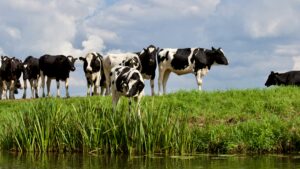
Leather Industry
Why Should Kenyans Abandon Leather in 2025?
As 2025 approaches fast, it’s time for Kenyans to critically reevaluate their relationship with leather. The leather industry, often seen as a symbol of luxury and status, harbors a brutal truth that many prefer to ignore.
From animal cruelty to environmental degradation, the case against leather is compelling and urgent.
The Reality of Animal Cruelty
The leather industry thrives on the exploitation of animals, particularly cows, goats, and sheep. In Kenya, many of these animals endure horrific conditions in the name of fashion and consumerism. Livestock often suffer from neglect, malnutrition, and inhumane treatment during their transport to slaughterhouses.
Investigations reveal that many abattoirs lack basic humane practices. Animals are frequently subjected to brutal handling, leading to immense pain and suffering. The World Animal Protection organization has documented numerous instances where animals are not stunned before slaughter, resulting in excruciating deaths. This cruelty should horrify anyone who considers themselves an advocate for animal rights.

Environmental Degradation
The environmental impact of the leather industry is equally alarming. The production of leather contributes significantly to deforestation, particularly in areas where cattle ranching is prevalent. According to the United Nations, livestock farming accounts for approximately 14.5% of global greenhouse gas emissions. In Kenya, as land is cleared for cattle grazing, critical ecosystems face destruction, leading to loss of biodiversity.
Furthermore, the tanning process, which transforms animal hides into leather, involves toxic chemicals such as chromium. These substances pollute waterways and soil, harming local communities and wildlife. In many regions, including Kenya, contaminated water sources pose health risks, contributing to diseases and disrupting local livelihoods.
The Wastage in the Leather Industry
The leather industry is rife with wastage, both in terms of resources and animal lives. For every animal processed, only a fraction of the hide is used for high-quality products. The rest—known as byproducts—often ends up as waste, further burdening landfills and contributing to pollution. This inefficiency reflects a broader issue of resource mismanagement that many consumers overlook.
In addition, the mass production of leather goods fosters a culture of disposability. Cheap, poorly made leather items flood the market, leading to increased consumption and subsequent waste. This cycle of production and disposal is unsustainable and harmful to our planet.
The Alternative: Sustainable and Ethical Options
Kenyans should consider the alternatives to leather that do not compromise ethics or the environment. Materials like organic cotton, hemp, and innovative synthetic options are becoming increasingly popular. These alternatives offer the same aesthetic appeal without the associated cruelty and environmental damage.
Moreover, embracing these sustainable options can stimulate local economies. By supporting businesses that prioritize ethical production, Kenyans can drive demand for innovative materials that respect animal welfare and environmental health.

A Call for Change
As consumers, Kenyans hold significant power. By choosing to abandon leather, we can collectively reject an industry that perpetuates cruelty and environmental harm. It is time to adopt a more compassionate lifestyle that prioritizes ethical considerations over mere aesthetics.
Awareness is key. By educating ourselves and others about the dark realities of the leather industry, we can foster a culture of empathy and responsibility. Communities must engage in discussions about the impacts of their choices and encourage the support of local artisans who use sustainable materials.
Conclusion
The leather industry is not just a fashion statement; it is a symbol of animal suffering, environmental degradation, and wastefulness. As we move into 2025, it is imperative for Kenyans to reassess their choices and consider the broader implications of supporting this industry. By abandoning leather and embracing ethical alternatives, we can pave the way for a more compassionate and sustainable future. Let’s make a conscious choice for our health, the environment, and the animals who share our world.







